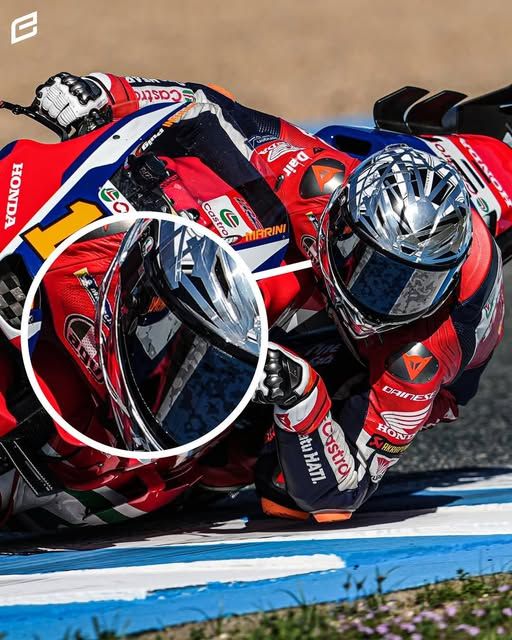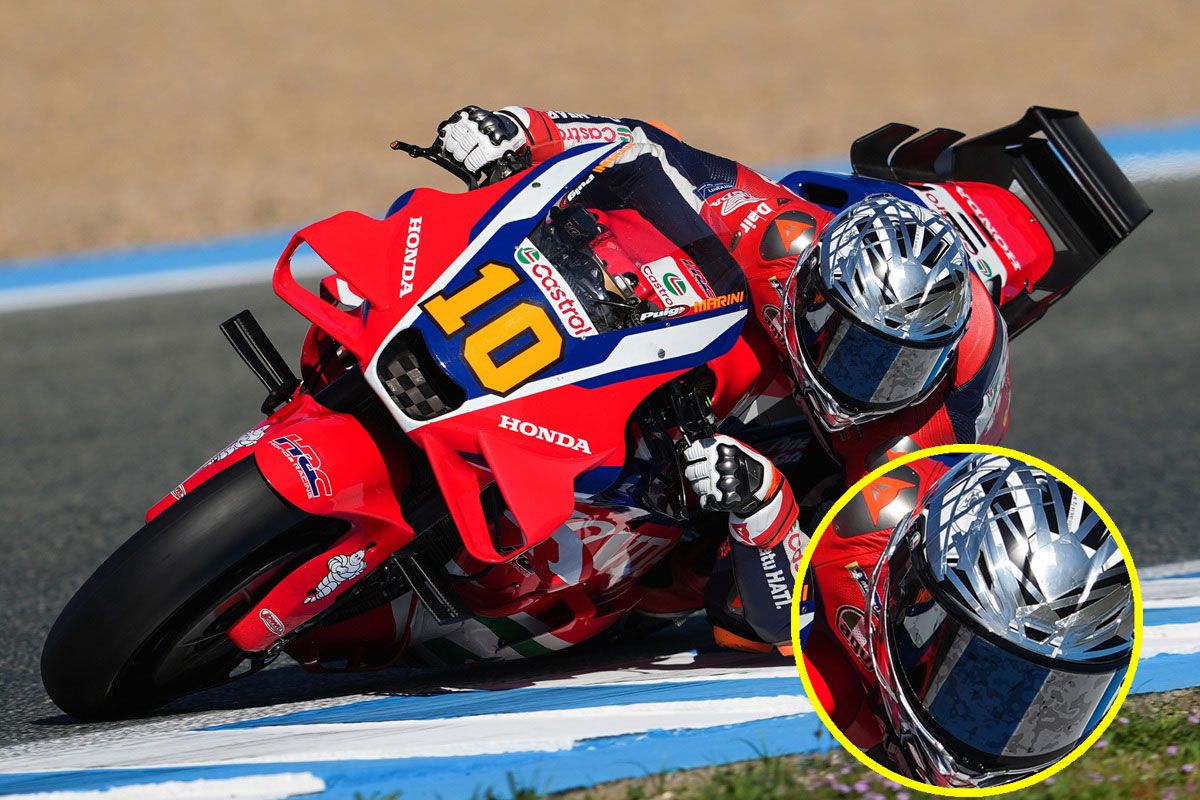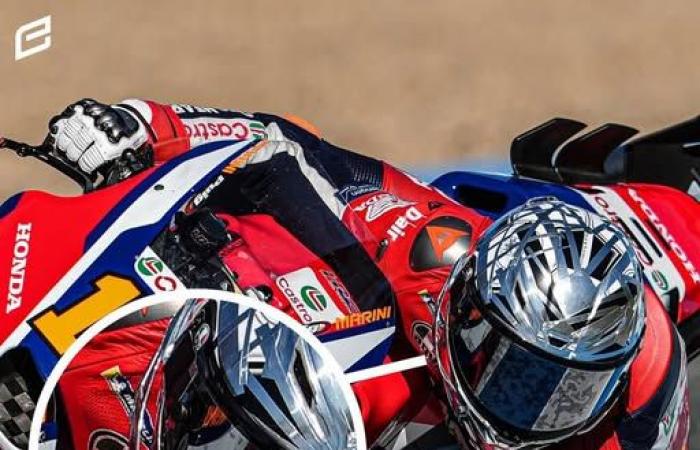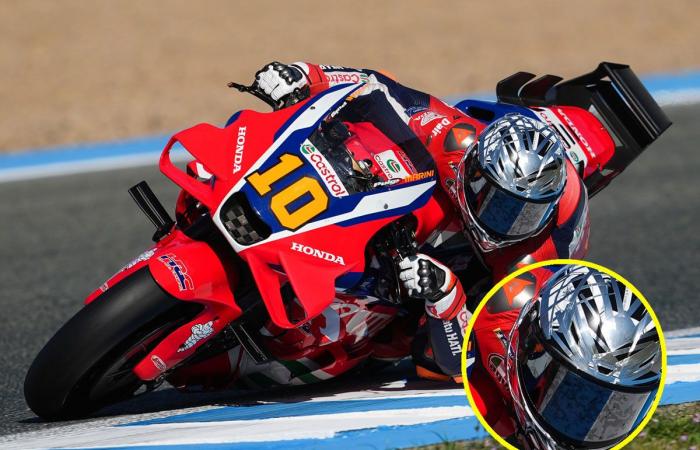During the official MotoGP tests in Jerez on April 28, 2025, Luca Marini (Honda HRC Castrol) not only refined the RC213V, but also drew attention by testing an unprecedented helmet, distinct from its usual AGV, with a new lateral aerodynamic solution. Completing 10th at the GP of Spain and out of the Top 10 at the tests, Marini explored crucial details in strong winds, stressing the importance of aerodynamics in MotoGP.
If the MotoGP tests at Jerez have delivered their usual lot of motor, electronics and chassis analyzes, Luca Marini surprised by attracting attention to … his head. The team pilot Honda HRC Castrol has indeed taken the track with an unprecedented helmet, sporting an aerodynamic design never seen in the paddock.
Beyond the simple aesthetic or sponsor change, this new helmet has a reworked side shapewith aerodynamic appendages visible on the sides. An innovative approach which testifies to a paradigm shift: in MotoGP, each surface exposed to the air becomes an optimization field.
This test does not seem to be an isolated whim. It is part of a more global performance research strategy at Hondawhere every hundredth counts to get out of the crisis. Mariniinvolved and methodical pilot, lent himself to the game in real conditions on the Andalusian circuit, directly confronting this new solution with high -speed air pressure.

« This kind of test with Luca Marini may seem secondary, but it’s anything but trivial »
« This kind of test may seem secondary, but it’s anything but trivial “, Entr was an HRC engineer on the sidelines of the session. “” If you can win 0.05 seconds in a straight line, This is a clear advantage over an entire race. »
Since the MotoGP explosion of aerodynamics on the fairings – front finons, “Stegosaurus wings”, flaps under the saddle – the helmets had remained relatively unchanged in their functional design. But the initiative tested by Marini could mark the beginning of a new era of innovation, where even the protections become performance instruments.
Recall that the helmet is not only an approved accessory: it is a key element in the global aerodynamic balance, especially Over 300 km/h. With this in mind, any turbulence or instability can alter the pilot’s behavior in straight lines or during high -speed direction changes.










